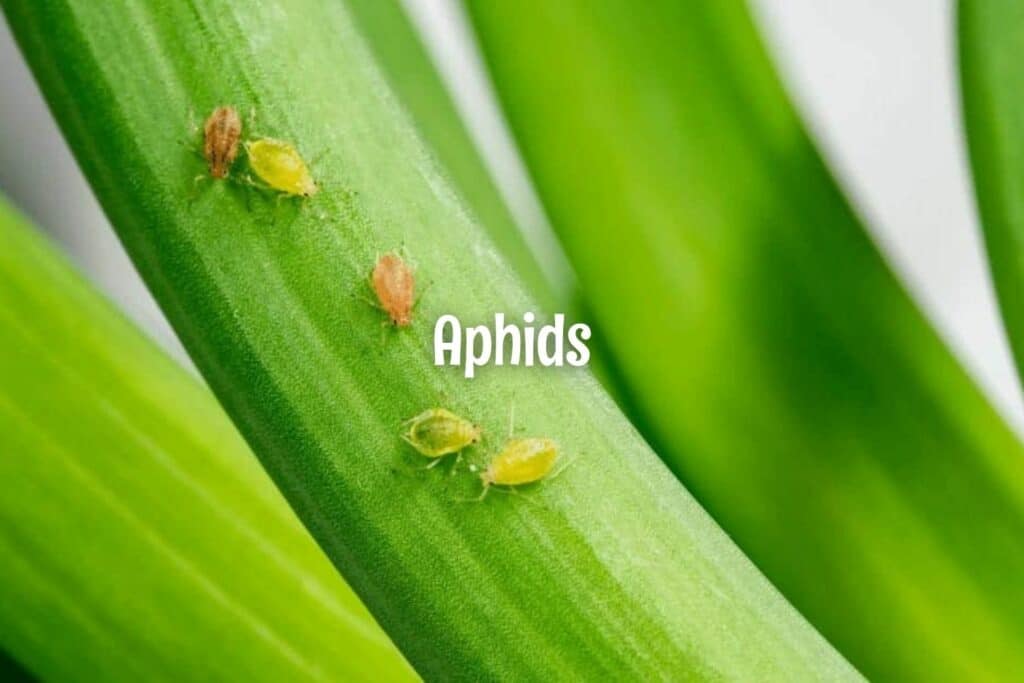
Aphids
by Marcie Crockett
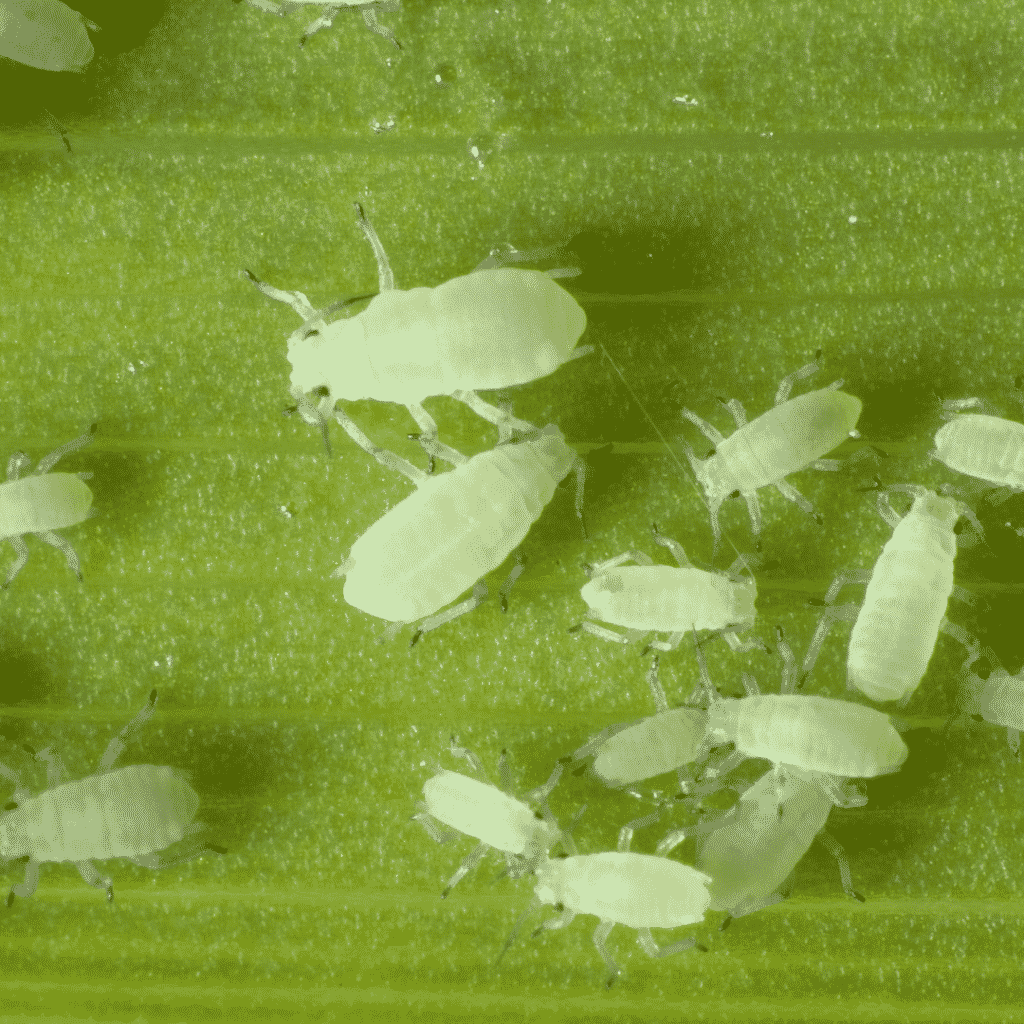
Aphids are soft-bodied insects that use their piercing sucking mouthparts to feed on plant sap. They usually occur in colonies on the undersides of leaves and on tender terminal growth. Heavily infested leaves can wilt or turn yellow because of excessive sap removal. Some plants are very sensitive to feeding by certain aphid species. Saliva injected into plants by these aphids may cause leaves to pucker or to become severely distorted, even if only a few aphids are present. Also, aphid feeding on flower buds and fruit can cause malformed flowers or fruit. Aphids produce large amounts of a sugary liquid waste called “honeydew.” The honeydew that drops from these insects can spot the windows and finish of cars parked under infested trees. A fungus called sooty mold can grow on honeydew deposits that accumulate on leaves and branches, turning them black. The honeydew can attract other insects such as ants and yellow jackets that will feed on the sticky deposits.
Host Plant
Aphids feed on nearly all plants. The first signs of infestation are wilted-looking plants that aren’t thriving. Looking closer, dense colonies of tiny (1/32 – 1/8 inch) soft bodied, pear-shaped insects are seen, especially on tender growing tips and undersides of leaves.
Biology and Life cycle
The nymphs (young stages) resemble the wingless adults, but are smaller.
First-instar (first growth-stage) nymphs are approximately 1 mm long, whereas older nymphs are almost as big as the adults. Aphids pass through four instars before becoming adults. Adults come in two forms, wingless and winged. Aphids come in almost every color. They can be green, yellow, pink, brown, black or any shade in between. To be certain of an aphid diagnosis, use a magnifying glass to find the pair of tiny “dual exhaust pipes” on their posteriors. These are properly termed “cornicles” and aphids are the only insects that have them. An even more amazing feature of life cycles of most aphid species is that reproduction is accomplished without the help of male aphids.
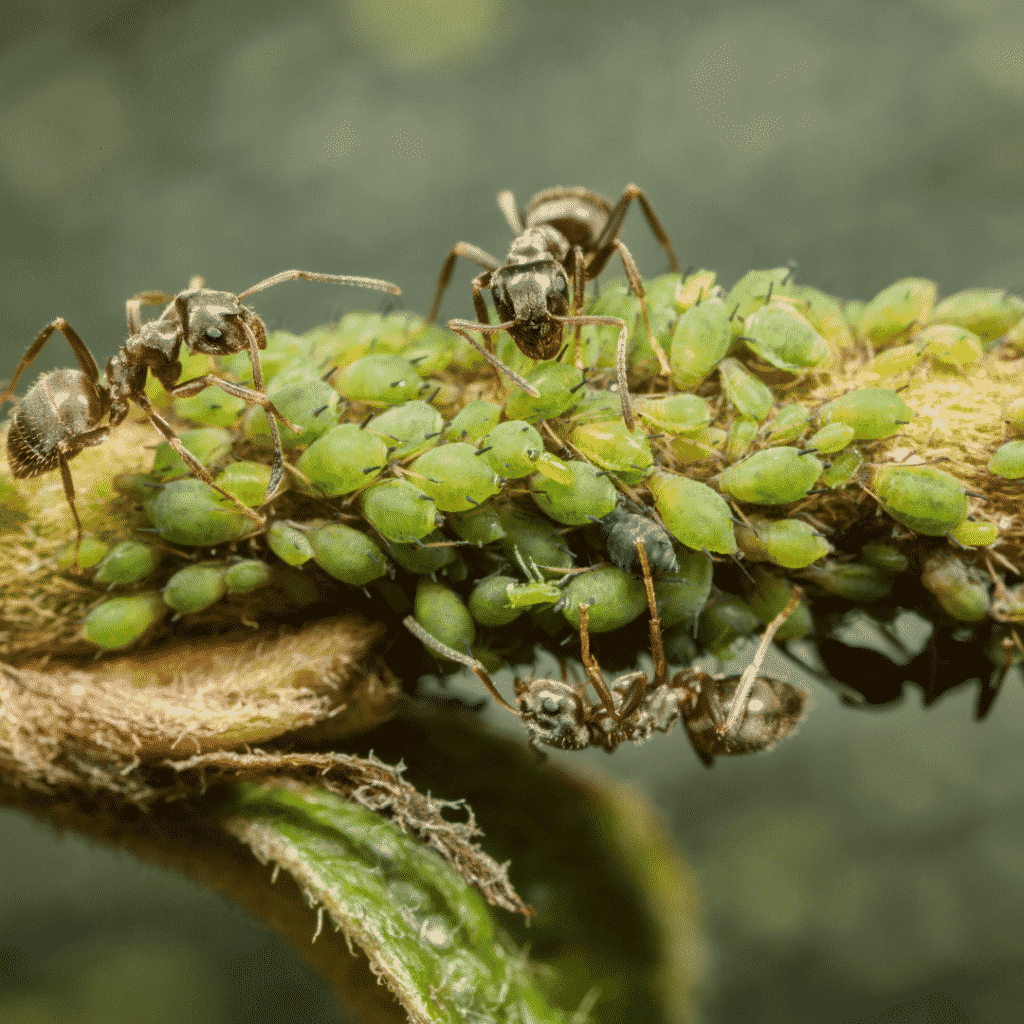
In the picture (Figure 3) you can see that some aphids are much smaller than the others. They were born from the larger females without the benefit of sexual reproduction, in a process known as parthenogenesis. When female aphids reproduce parthenogenetically, instead of laying eggs, they give birth directly live young called nymphs.
Most species of aphids have similar life cycles. Aphid females give birth to live offspring all year without mating. When other hosts are not available, aphids live on a wide variety of weeds. Aphids usually are found in colonies on new growth, the undersides of leaves, and near flower and fruit clusters. In summer and fall, aphids may produce winged females and, later, winged males. They mate and produce eggs for overwintering, especially in colder climates. Otherwise, adult aphids overwinter on crops, weeds, or trees. There may be as few as two generations or as many as 16 generations each year, depending on the species and climate.
Monitoring
Check plants frequently after new growth begins. Aphids often are concentrated in “hot spots.” Be sure to look for evidence of biological control; i.e., the presence of predators, parasites aphid mummies, and disease. Aphid flights are most common during periods of moderate temperatures (60 to 80°F).
Management-biological control
Many parasites and predators attack aphids. Monitor the proportion of aphid mummies to unparasitized adults and the number of predators such as lady beetles. If the biocontrol agents appear to be gaining control, avoid sprays which would disrupt this system. Most products available for aphid control are highly disruptive of natural enemy populations. Cultivation of other flowering plants with some crops provides nectar and pollen sources that attract aphid predators.
Management-cultural control
Wash aphids from plants with a strong stream of water. Controlling weeds late in the season may help reduce overwintering populations. Aphid populations tend to be higher in plants that are fertilized liberally with nitrogen. Prune out suckers and other excess growth that might encourage colonization. Control ants, which “farm” the aphids and protect them from predators. A narrow band of “stickem” at the base of the stem should exclude ants.
Management-chemical control
Apply when aphids appear, and repeat if necessary. Direct spray at undersides of leaves. Avoid making applications of insecticides to plants in bloom to avoid bee injury.
- acephate
- Beauveria bassiana
- cyfluthrin
- dimethoate
- horticultural oil
- imidacloprid
- insecticidal soap
- malathion
- neem extract
Read and follow label directions and precautions making certain that the product that you purchase is registered for the target pest.
Originally published April 2, 2003



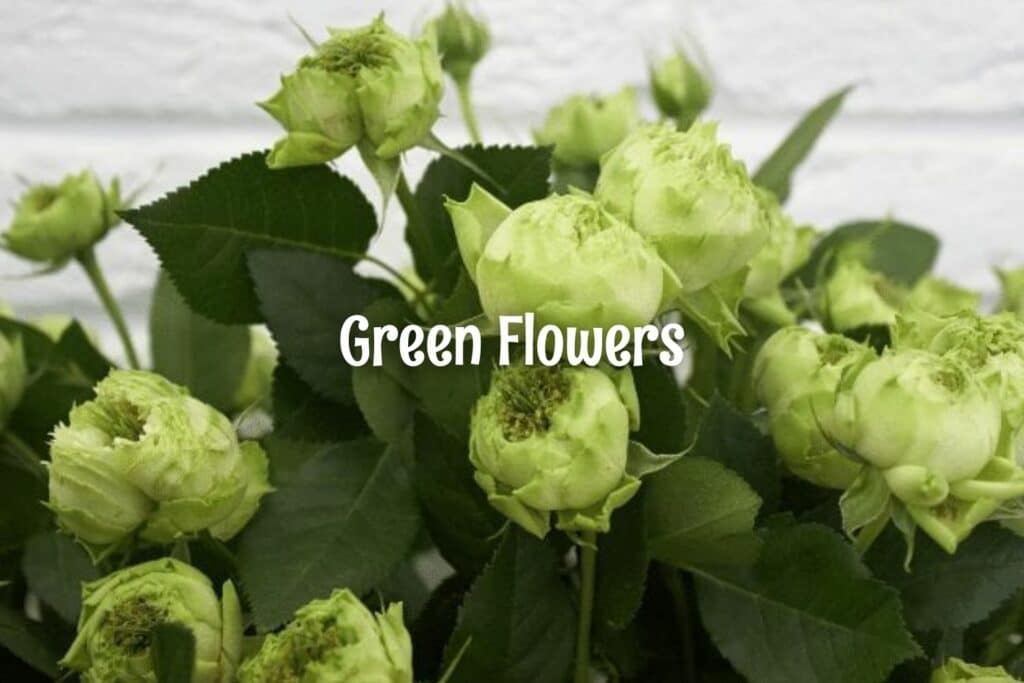
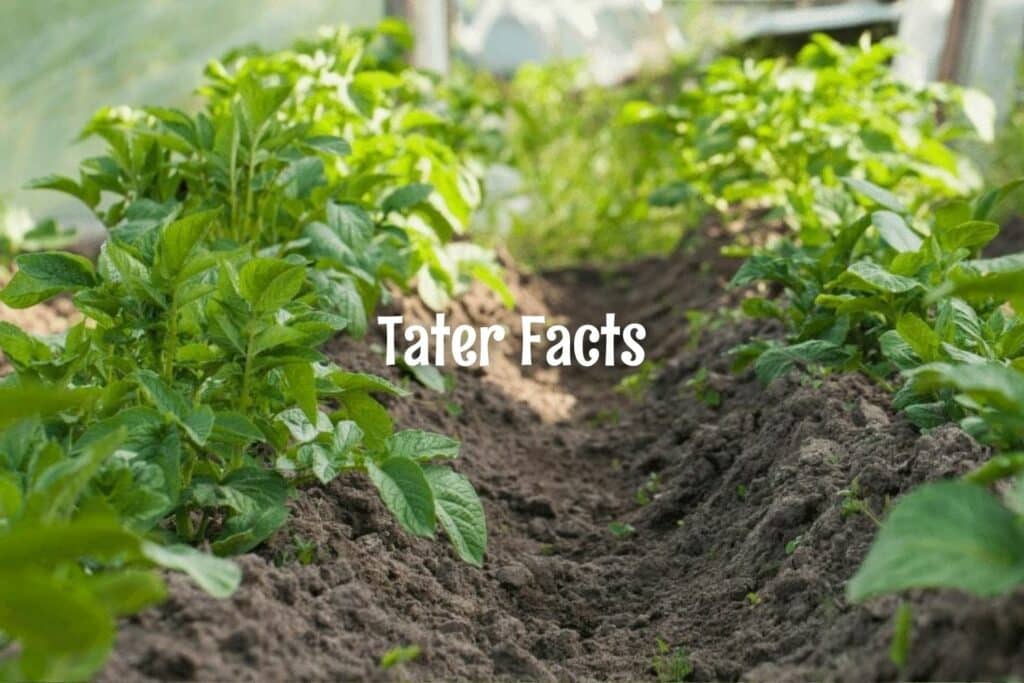
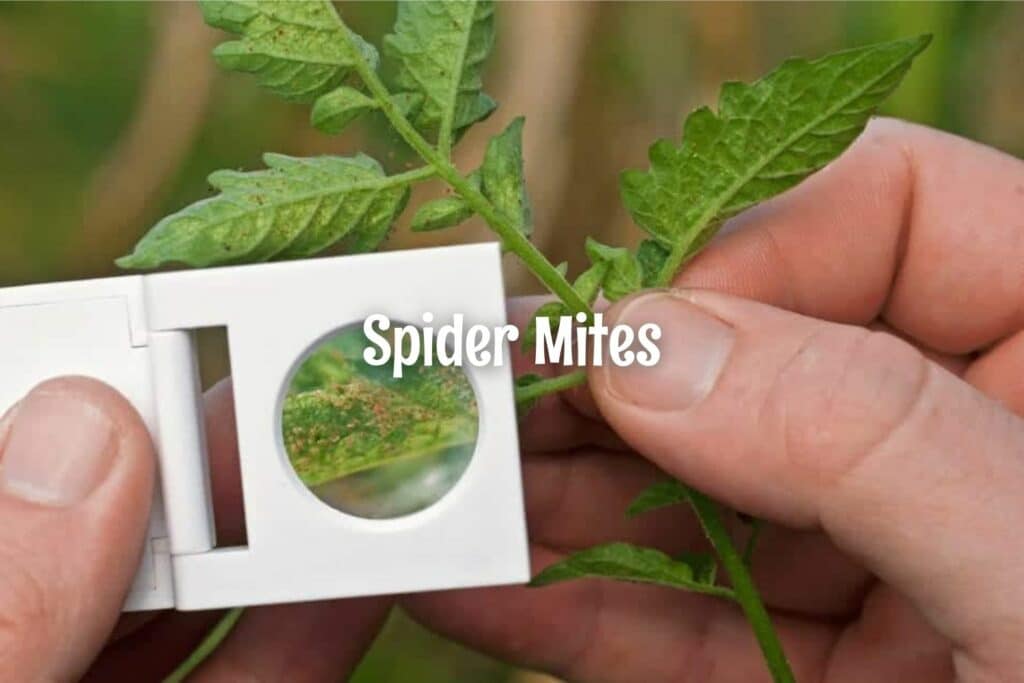
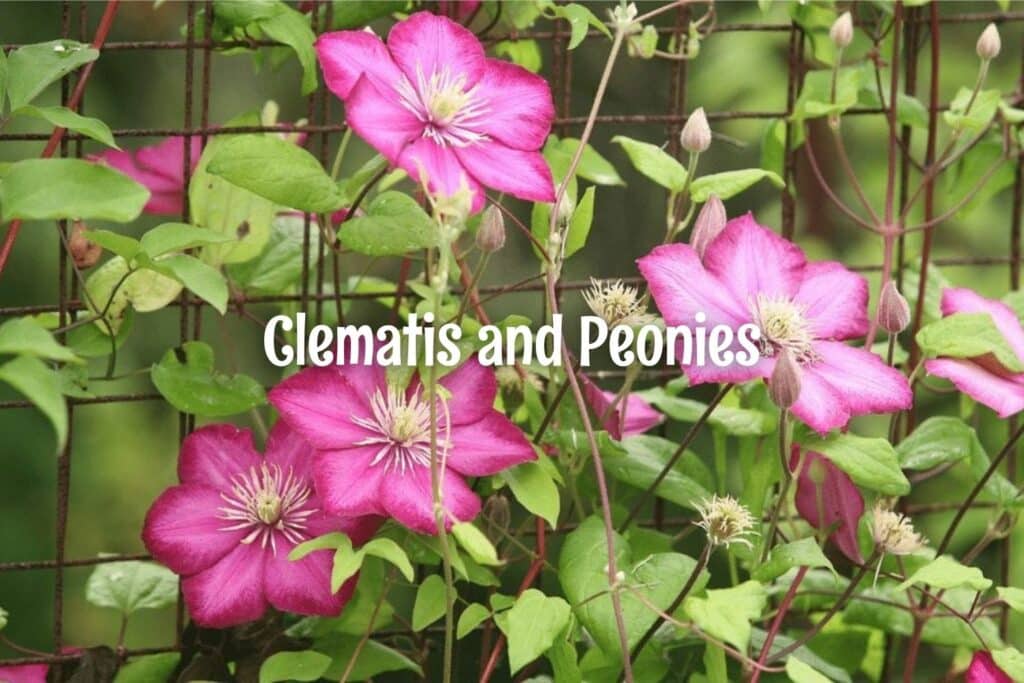
Responses